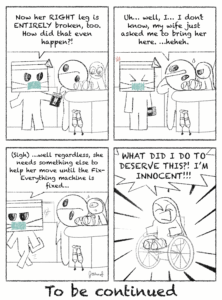Seventy-five years ago, the U.S. dropped atomic bombs over the cities of Hiroshima and Nagasaki, effectively bringing World War II to a close. Although the war was won, it came at the cost of destroying thousands of innocent lives, neighborhoods, and communities in Japan. On the research end, the bombs came to fruition at the cost of gravely unethical research practices.
The Manhattan Project is widely known for being the best-kept secret that brought together some of America’s top scientists and engineers to create the world’s first atomic bombs. While New Mexico and, unsurprisingly, Manhattan come to minds as the research hot spots, UR supplied their fair share of both minds and materials.
Atomic bombs are built with radioactive chemicals, such as plutonium and uranium. A relatively new discovery to scientists of the early 1940s, little was known about how these chemicals affected the human body. Louis Hempelmann, a head medical professional at the Los Alamos research site, later admitted that “nobody had worked with plutonium before.” After his work at Los Alamos, Hempelmann went on to become a professor at UR, and chairman of the Radiology Department.
To protect the health of the many scientists and engineers who would be working on the bombs, more research on the properties of plutonium and uranium was necessary. Initially, researchers used animals, such as rats, to study the chemicals. Shortly after these began, researchers began injecting the chemicals into human subjects, often without their consent. The main goal of these largely unethical experiments was to find a baseline dose of plutonium before it damaged the human body. These studies, known as the Human Plutonium Injection Experiments, were conducted at various hospital sites across the country, including Rochester’s Strong Memorial Hospital.
Dr. Stafford Warren, a former employee of the Radiology Department at the UR School of Medicine and Dentistry, was selected as the head of the Manhattan Project’s new health department, the Medical Engineer District. To better understand the unknowns of plutonium and uranium, amongst other radioactive substances, he led the experiments to “inject radioactive elements […] into civilian patients around the country.”
At Strong Memorial Hospital, a Manhattan Annex was built to study the “toxicity of radioactive isotopes including plutonium, uranium, and polonium” in attempts to determine minimum dosage that would “produce detectable kidney damage.” According to the Atomic Heritage Foundation, the Manhattan Annex was “accessible only by underground tunnel” and “guarded with strict scrutiny.” Surprisingly, much of the research and experimentation took place after the end of World War II. From 1943 to 1947, “11 hospital patients were injected with plutonium, 6 were injected with uranium salts, and 5 patients were given doses of polonium.” Experimentation would continue even into the ’60s.
Like the Manhattan Annex, all research sites kept things tightly under wraps. Doctors and scientists often used code names for certain chemicals and for human patients. For example, an African American man named Ebb Cade was classified as HP-12, standing for “Human Product-12.”
Cade had gotten into a car accident on his way to work, sustaining a “broken leg among other injuries.” He was taken to Oak Ridge Hospital, one of the project-affiliated hospitals. Instead of immediately treating his injuries, doctors on site instead injected plutonium into him without his consent. They injected him with a dose of 4.7 micrograms, a dosage “which was almost five times the acceptable, recommended limit.” To track where the plutonium traveled within his body, they also removed 15 of his teeth. Three weeks after he was admitted to the hospital, the doctors set his leg.
Simeon Shaw was only 4 when he was diagnosed with osteogenic sarcoma, a type of bone cancer. Originally from Australia, his doctor recommended he travel to the U.S. for consultation and, potentially, treatment. When he and his family arrived in San Francisco, Dr. Larson wrote that “it was decided that neither amputation nor X-ray therapy or a combination of both would affect a cure in this case.” Another doctor, Joseph Hamilton, injected the boy with plutonium at least several times and removed bone tissue, which served no curative purpose. Shaw’s mother was told that the injection and bone tissue removal was part of the treatment. Dr. Langham, a biochemist at the Los Alamos location who had doctors inject unaware patients with severe health conditions, allegedly said the patients were “expected to die anyway.”
An explosive determinant in the course of World War II, the atomic bombs opened up the path for the Allies’ victory. However, it came at the price of unnecessary bloodshed on both sides of the war. Many innocent people were harmed and stripped of their rights. Achieving victory through such immoral lengths, the Manhattan Project will forever be a dark moment in America’s history.


